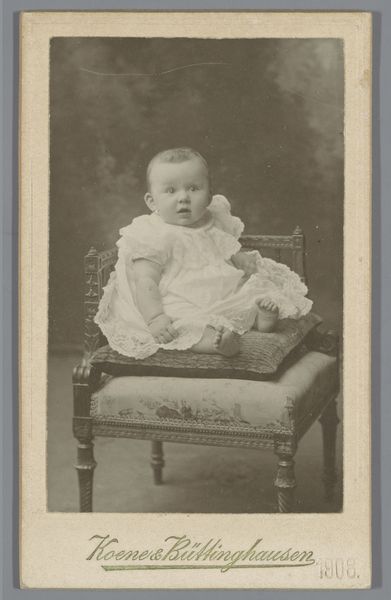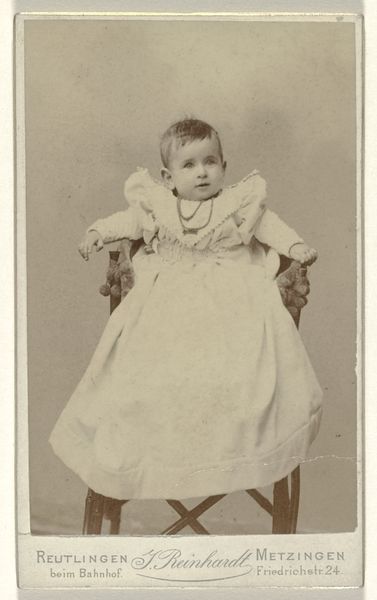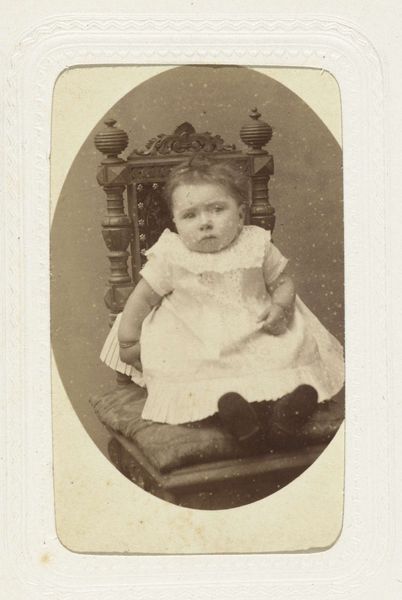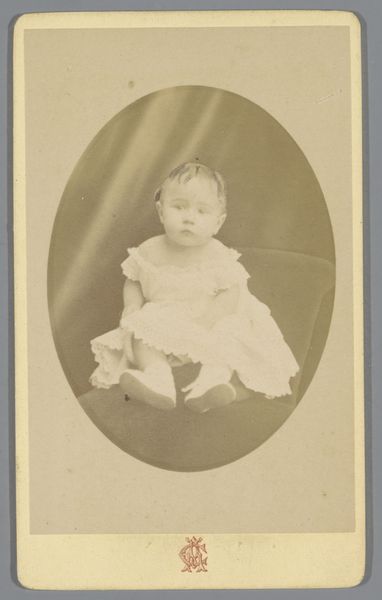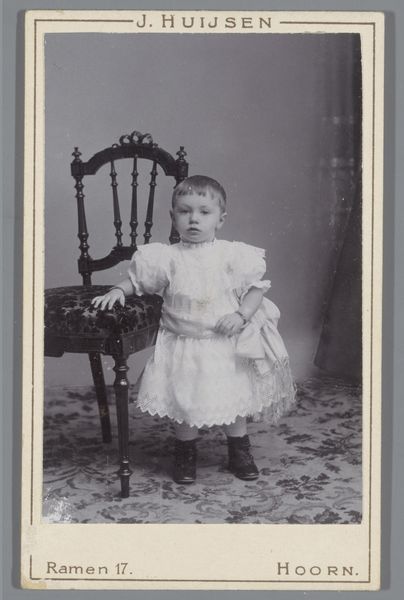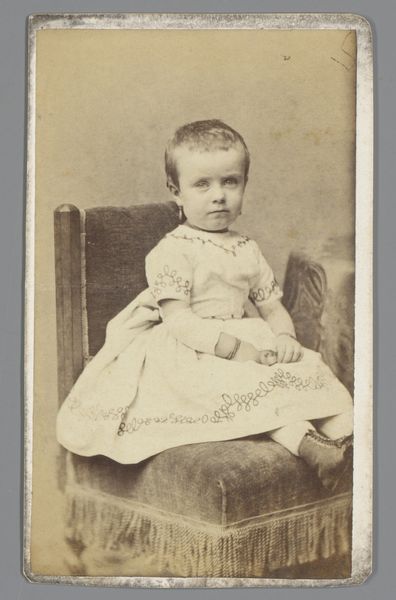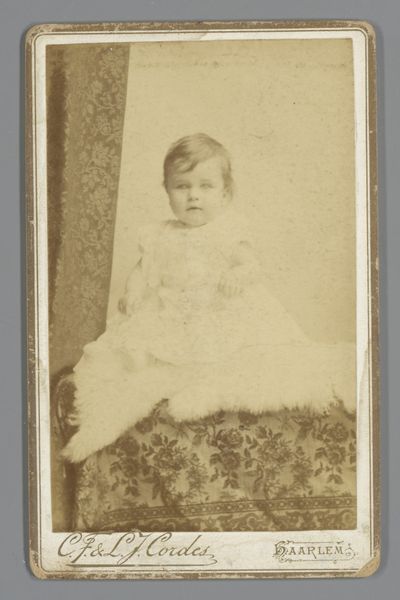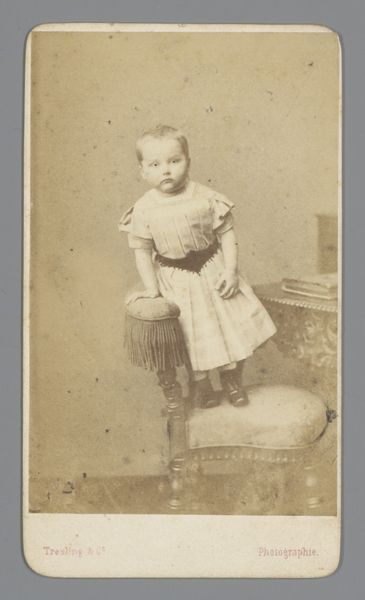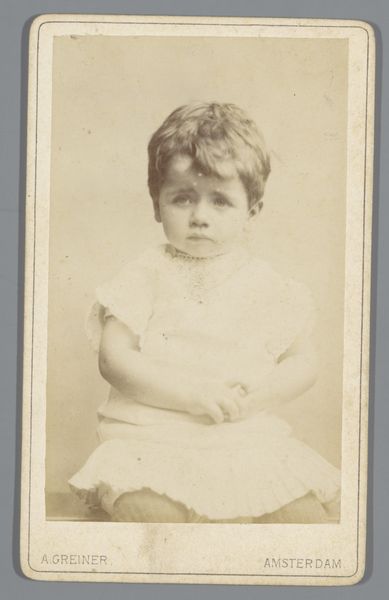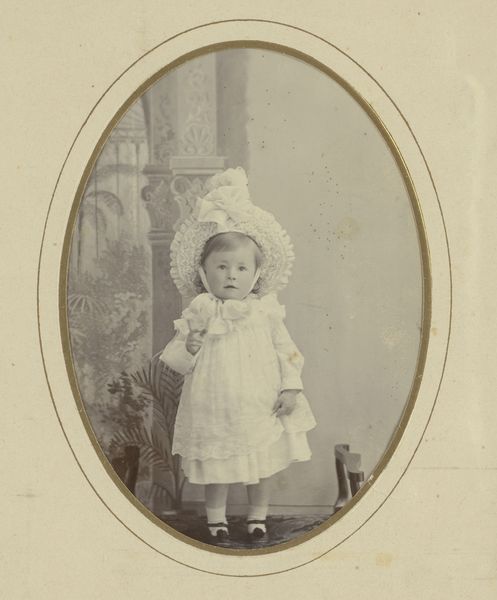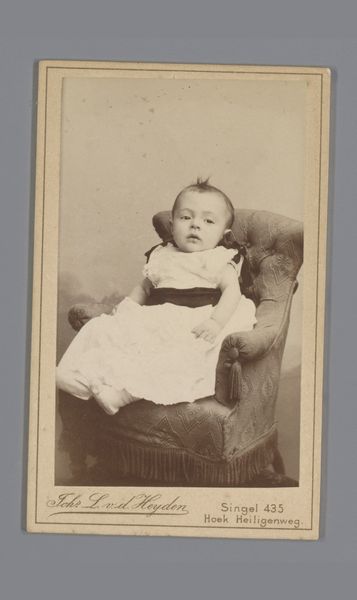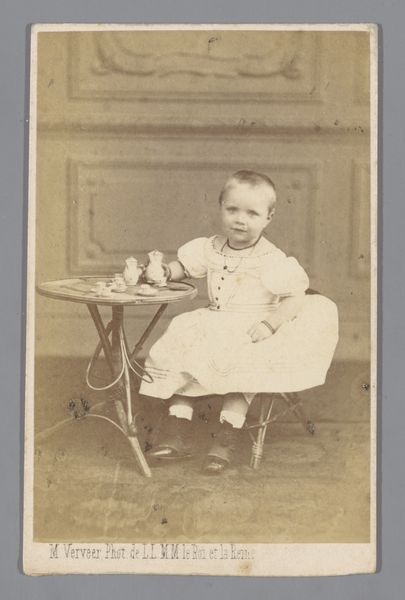
photography, albumen-print
#
portrait
#
photography
#
historical photography
#
child
#
19th century
#
albumen-print
#
realism
Dimensions: height 140 mm, width 98 mm
Copyright: Rijks Museum: Open Domain
Curator: Before us, we have an albumen print dating from somewhere between 1880 and 1900. The work is simply titled, “Portret van een onbekend kind” which translates to "Portrait of an Unknown Child" in English. Editor: Immediately striking. It's that fixed, almost confrontational stare in such a young child. The neutral backdrop and the muted tones of the albumen print really amplify the intensity of the gaze. Curator: Exactly. The portrait was taken by Louis Robert Werner, who operated a studio in Amsterdam during this period. These images would have been important tokens for families and individuals alike. Editor: Absolutely, and it’s worth noting the visual conventions at play here. The child is carefully positioned and styled to signal belonging to the bourgeois: pristine lace, leather boots, all communicating prosperity. The setting reminds me a bit of what Judith Butler describes as performances that reinforce cultural norms. The child is playing at adulthood, which also points towards Victorian constructions of childhood. Curator: That's right. The very act of photographing a child served as a symbol of status, showcasing familial pride in a rapidly changing society where new technologies offered new avenues for displays of wealth and belonging. Editor: I can't help but consider what stories are missing from these portraits. This child likely represents a very specific experience and social positioning; the unrepresented stories, the children from impoverished backgrounds, children of color... what do they tell us about the silences and omissions in the historical record? Curator: A critical question, indeed. It highlights the exclusivity of the medium in that era. While photography democratized image-making to an extent, access remained uneven. Museums should work to uncover untold histories. Editor: For sure. By interrogating the known, we gain clearer perspective of the larger historical frame. Thanks for putting this one in context. Curator: Likewise! It has been good considering with you how photographs played their own, carefully constructed part in society back then, with complex echoes still relevant today.
Comments
No comments
Be the first to comment and join the conversation on the ultimate creative platform.


